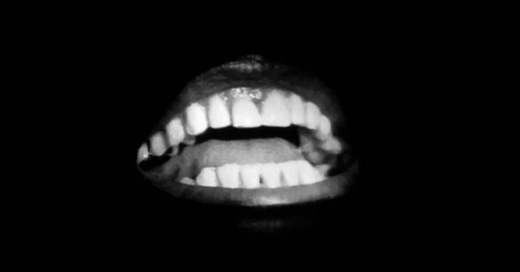The Rules are Myths (1): Undoing "Show, Don't Tell"
It’s got to be pretty obvious by now that one of the most patently referred to rules of thumb in writing, “Show, don’t tell,” is errant advice.
This is the first of a series of mini-lectures and workshop exercises taught in my “The Rules are Myths” creative writing module offered through Catapult in 2017. I will be posting all 6 of the lectures here over the next few weeks.
It’s got to be pretty obvious by now that one of the most patently referred to rules of thumb in writing, “Show, don’t tell,” is errant advice. Following this rule would relieve us of the work of Beckett, Stein, Artaud, Burroughs, Acker, Guyotat, Proust; an endless list of foundational works that survive precisely because of their ineffable qualities; the questions being asked and not answered, terrain opened and left to continue to do work beyond some simple plot-driven or metaphorical resolution.
One of the greatest things about language is that it can depict things that other mediums cannot: systems of logic and physics that defy the everyday, that which can’t be visually depicted. Narration is a lens of sorts, after all, allowing the presentation of a perspective, not just a series of literal cues; in great writing, the way something is said (or not said) carries as much or even more weight than what actually happens. The story comes in the experience, in the sound, in the space created in the wake of wanting, without the necessity of an aphoristic takeaway to pretend we’ve gotten somewhere upon; in fragments and refractions over the illusion of total story, as if life is any way compact, predictable, pat with its lessons.
Think of the difference between a book you read once and then never have to read again because you already know what happens versus a book you would love to read over and over because of how the sentences connect inside you, touching something that could not otherwise be touched.
In my opinion, telling instead of showing is maybe the only reason there are books still in an era where A to B storytelling has become dominated by much more passive forms. It has never been more vital to write now in such a way to beat back against reality, to create new space within the old, to obliterate meaning in favor of creating irreplaceable experience, available only through the language on the page; not a cryptic set of coded keys and locks, necessarily, but in disruption of the myth of linear time, of nostalgic takeaways and platitudes, stories for the sake of filling time.
What has already happened has already happened. How you tell it, what it exudes, appends, is everything.
READINGS
Diane Williams, “Four Stories”
Hilda Hilst, Except from Letters from a Seducer
EXERCISE
Write a short piece (1-2pp) that works like a monologue, all telling, and depicting a voice speaking from a state of unclear emotional distress: anxiety, fear, paranoia, etc. Let there be something the narrator is trying to impart the oncoming of, with out without ever revealing what the force or thing might be, and without letting anything actually happen beyond intimation, the possibility of threat. The tension in the piece will come from what is as yet to come, what it draws out of the speaker in anticipation, in what is revealed within as nothing actually happens.






Hey just a heads up, a bunch of the links to the readings across this series seem to be dead.
Thank you for this subtle reminder that language is everything, the musicality of it, the beats, how the 'sound' of something on the page lodges into your synapses. Great writing is like great music, your brain remembers it long after the PLAY button has been depressed. Thank you, Blake!